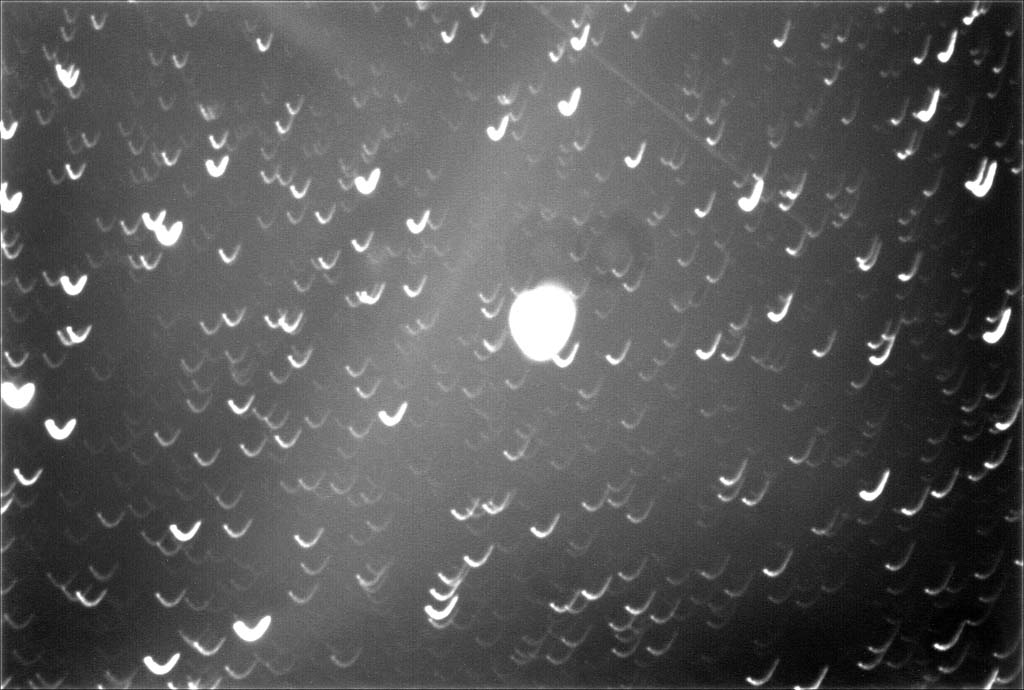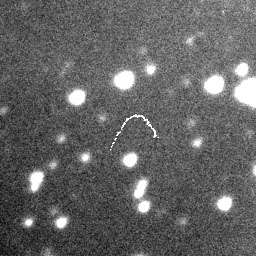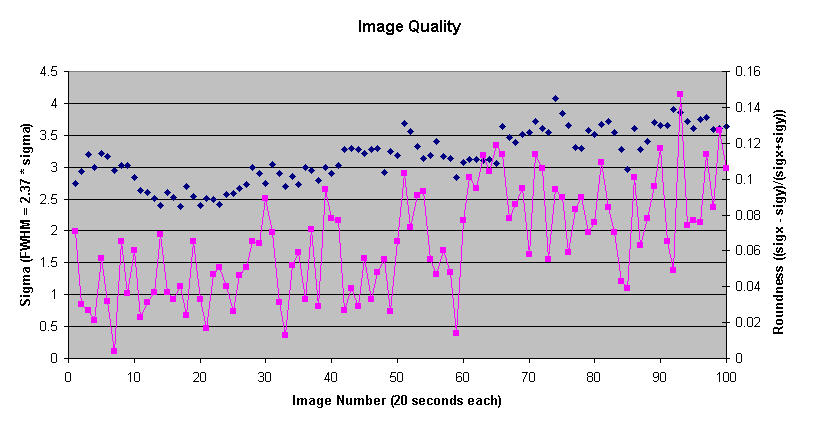
Cal Poly 18 Bulletin 05
2011-10-25: Curious Results
More days and nights of work on the Cal Poly have produced marked progress.
The "curious results" were that during the calibration runs and subsequent imaging, the telescope became progressively out of collimation (i.e., showing strong coma-like aberration) and out of focus (easily visible donuts). WHY? We had lots of ideas, but it's hard to troubleshoot these kinds of problems at night. The mirror cell needs close inspection and testing. It may be significant that the air cooled to 26 F, so thermal problems may play a role. The images described below may point to the problem.

This is a sequence of 100 images taken over a 50 minute timespan stacked into a single image. Each exposure was 20 seconds, and an addition 10 seconds were needed to download and store each image. In the image above, all 100 were simply averaged. Note the peculiar trails!
![]()
Here are the same 100 images, this time aligned using two stars before averaging. The image stacking log shows 1.5 degrees of image rotation occurred. Star images are neither small nor round. This is the "prettiest picture" we have taken so far.
![]()

Here are the same small sections in the straight-stacked and aligned before stacking. The curved path in the aligned image is a single hot pixel.
The star trails represent the difference between the telescope pointing model and the physical telescope. Given that the trails we have seen in previous test sessions show effects we expected to see such as simple rotation about a center, these trails are very curious. In these images, the x axis is azimuth and the y axis is altitude.

Finally, this graphic shows the image size in pixels and the image roundness versus image number (i.e., time). Note the decline in both during the 50-minute observation. We're looking at 5-arcsecond star images, which is really pretty awful. Sigma should be around 1.5 pixels rather than trending toward 3.5.
This is Cal Poly Bulletin 05
Main CalPoly Bulletin page or go back to Bulletin 04 or ahead to Bulletin 06
Return to Richard Berry's Home Page